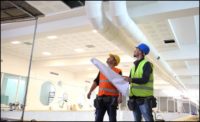Where does one begin to decide on the optimum HVAC system for a project application? Building owners, consulting engineers, contractors, and even equipment manufacturer representatives should all know there is a time-tested method to selecting this optimum HVAC system for their project. ASHRAE 2020 “HVAC Systems and Equipment Handbook,” Chapter 1, HVAC System Analysis and Selection, clearly takes one through the process of analyzing with pertinent questions to be asked by the HVAC design engineer when beginning a project. These questions are:
- What are the primary goals for the building owner and his or her building program?
- What are the additional supplementary goals for this program/project?
- What will be the project delivery methods?
- Are there equipment and system constraints?
- Are there constructability constraints?
- How do you narrow the choices?
These questions by the consulting design engineer should be directed to the building owner. There are 30-plus questions beginning with, “What are the desired environmental conditions, e.g., temperature, humidity, etc.?” Because these factors are interrelated, the owner, design engineer, operator, and builder must take into account how each criteria affects each other and the relative importance of each of the desired goals. Often, the goal for close temperature and humidity will eliminate certain HVAC systems based on the system’s limitation, e.g., cannot accommodate close humidity control. The same can often occur with the desired supplementary goals, such as the first cost and operating cost, for selecting an HVAC system that provides a germ-free environment.
The owner-design team’s decision on the project delivery method is a very important decision needing to be made at the conceptual phase of a building program. This decision can influence the selecting of the optimum HVAC system, e.g., fast-track project schedule and phased construction within this schedule. Here is where a primary contractor and/or an estimator consultant needs to be familiar with this HVAC system analysis and selection process so that this contractor or consultant can contribute to the optimum system selection. Others who may be able to contribute to the optimum HVAC system selection can be the commissioning agent, security consultant, and/or infection control consultant to mention three other resources in the initial design phase of the project.
Equipment and system constraint, as well as construction constraint decisions, can be identified and solutions achieved with the help of specific manufacturer representative(s) based on the HVAC systems being considered for the optimum selection for this job. Here, too, the contractor can contribute to these solutions depending on which project delivery method is being considered. For example, design-bid-build general contractors are not involved with projects during the design phase; whereas a construction management firm, integrated project delivery team, or a design-build firm can be available during the conceptual phase of the design.
Chapter 1 of the 2020 Handbook consists of 10 pages, with each page providing valuable questions and considerations that building owners, consulting engineers, contractors, and equipment manufacturer representatives should all be very familiar with when starting a project.




